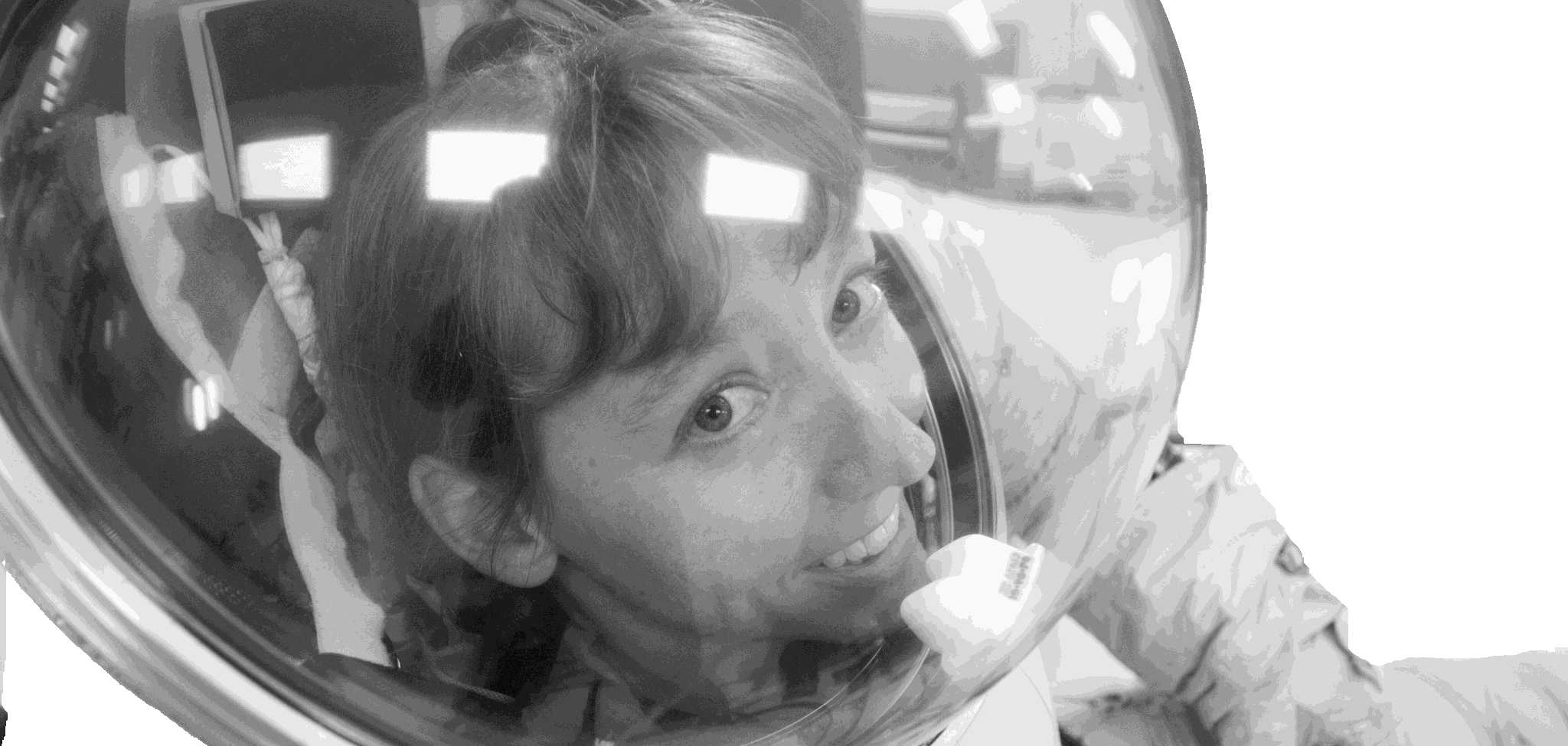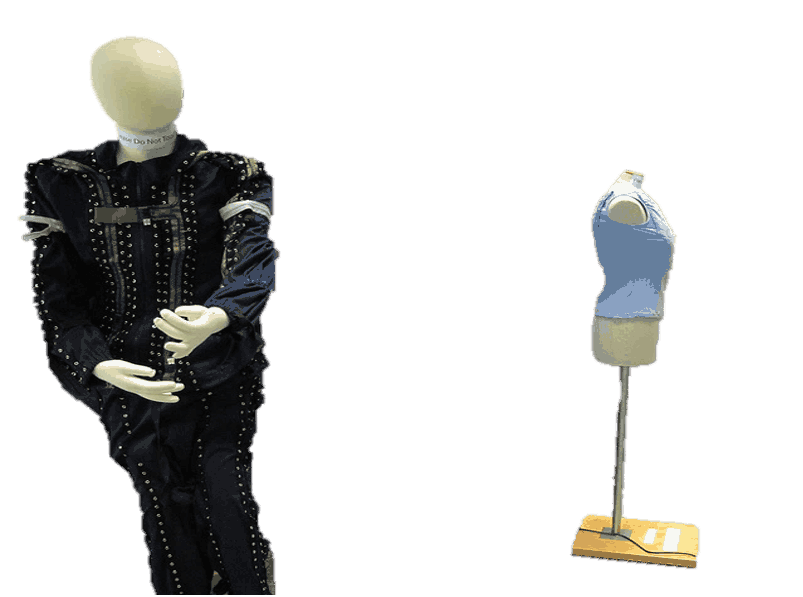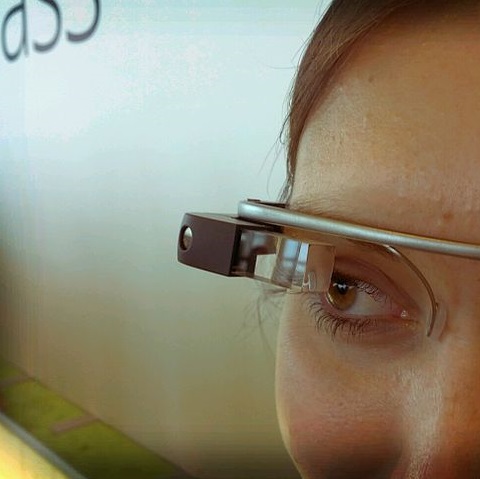SHE: Smart Home Energy Management System for Appliance Identification and Personalized Scheduling
The home appliance scheduling is a promising energy saving technique that has significant commercial potential. In this demo, Smart Home Energy Management System (SHE) is developed on Android platform to schedule users’ appliances. SHE monitors the power consumption to identify the operations of home appliances using a privacy preserving technique called Non-Intrusion Load Monitoring (NILM). The operations are integrated with dynamic electric price and environment data to mine users’ personal demand and preference on appliance operation. Finally, SHE generates personalized scheduling strategies to meet the different users’ demands at the minimal cost.
Ting Liu, Yuqi Liu, Yulin Che, Siyun Chen, Zhanbo Xu, Yufei Duan
RFID-Die: Battery-free Orientation Sensing Using an Array of Passive Tilt Switches
We demonstrate the combination of tilt switches with RFID for building fully passive orientation-sensitive devices. We show the functionality of this approach with a simple die that can be read out with an NFC-enabled smartphone. As the proposed orientation system does not require battery powering, it is of interest to various wearable-computing and smart-home applications that benefit from long system runtime.
Lars Büthe, Michael Hardegger, Patrick Brülisauer, Gerhard Tröster
Squeeze the Moment: Denoting Diary Events by Squeezing
In this demonstration, we showcase SqueezeDiary, a novel mobile diary application that uses squeeze gestures for denoting instances of events. SqueezeDiary consists of a mobile phone and a small squeeze sensor that communicate over a Bluetooth connection. To record an event instance, the user simply squeezes the sensor, and the phone records memory cues for review later. SqueezeDiary provides features for users to swiftly record instances as they continue to live through the experience, and only reflect on the instances during their downtime.
Ming Ki Chong, Jon Whittle, Umar Rashid, Chee Siang Ang
Physics Education with Google Glass gPhysics Experiment App
We present a fully functional application prototype gPhysics App \ based on the Google Glass platform which is designed to \ perform an educational physical experiment in the area of acoustics. \ The initial applications aims towards students whose task is to find the \ relationship between the frequency of the sound generated \ by hitting a water glass and the amount of water.
Jens Weppner, Michael Hirth, Jochen Kuhn, Paul Lukowicz
Memo-it: Don't write your diary, Sense it
The profusion of sensors embedded in modern mobile devices collect an increasing amount of information about the activities performed by a user. Leveraging the episodic memory model defined by neuroscientists, Memo-it exploits this information to create a multi-scale structured representation of the user's activities in a semi-automated fashion, while preserving the privacy of the user's data. In addition to building a digital diary of the user, the semantic approach taken by Memo-it is able to answer multi-dimensional queries, and to enable the inter-operability of memories between users.
Karl Aberer, Michele Catasta, Georgios Christodoulou, Ivan Gavrilovic, Filip Hrisafov, Mathieu Monney, Abdessalam Ouaazki, Boris Perovic, Horia Radu, Jean-Eudes Ranvier, Matteo Vasirani, Zhixian Yan
MiniOrb: A Sensor Interaction Platform for Indoor Climate Preferences
MiniOrb is a combined sensor and interaction platform built to understand and encourage the gathering of data around personal indoor climate preferences in office environments. It consists of a sensor device, gathering localised environmental data and an attached tangible interaction and ambient display device. This device allows users to understand their local environment and record office comfort preferences. In addition to the tangible interaction device we built a web-based mobile application that allowed users to record comfort preferences through a different interface. We describe the design goals and technical setup of the MiniOrb platform.
Markus Rittenbruch, Jared Donovan, Yasu Santo
Multi-device Activity Logging
In this paper we are presenting i-Log, a system able to collect user's personal information, generate streams of data from smartphone's integrated sensors and attached wearable devices. We decided to focus our attention on these general purpose devices as we believe they can generate truthful readings because of their easy integration with our day-life activities, while invasive dedicated logging devices can alter our normal routines. The system consists of a Mobile Application that collects data from the smartphone and additional wearables. We designed it to be user friendly, unobtrusive and able to provide smart sensing strategies to preserve battery life.
Mattia Zeni, Ilya Zaihrayeu, Fausto Giunchiglia
Stereoscopic 3D Mobile Maps for Indoor Navigation in Multi-Level Buildings
We present our research demonstrator where autostereoscopic 3D (S3D) display equipped mobile devices, enabling the perception of depth, are used to provide a user interface (UI) for indoor navigation. The design approach suits especially for aiding navigation within multi-level buildings, such as shopping malls, airports and museums. Compared to the current 2D design approach of displaying building floor levels side-by-side, the use of stereoscopic 3D offers potential to improve understanding of the space, glanceability of map based UIs, and the ability to navigate between locations on different floor levels.
Ashley Colley, Juho Rantakari, Jonna Häkkilä
Collaborative Geometry-Aware Augmented Reality
Augmented reality (AR) has progressed to the point where geometry-aware real-time applications involving multiple users are now possible. We present an approach for a collaborative augmented reality environment using an RGB-D camera and KinectFusion, collecting visual and depth data from a static environment that is used as a fiducial for multiple users. This allows for collaborative augmented reality environments where digital data and real world objects can appear to interact.
Yuhao Ma, Joshua Ferguson, Kevin Jonaitis, Kyle Boos, Donald J. Patterson
HoppingDuster : Self-adaptive Cleaning Robot based on Aerial Vehicle
In this demo, we show a new concept of cleaning robot, called HoppingDuster. \ HoppingDuster is based on an aerial vehicle, which can fly to stairs or furnitures to be cleaned, \ and hop or hover to wipe or blow down dust on them toward the floor so that \ the ground cleaning robot can vacuum the dust.
Kenji Tei, Kazuya Aizawa, Shunichiro Suenaga, Ryuichi Takahashi, Shun Lee, Yoshiaki Fukazawa
Networked On-Line Audio Dilation
Audio Dilation is a technique that slows down the tempo of audio signals without changing the pitch or otherwise distorting the sounds. Networked On-line Audio Dilation is an Android application that allows users to dilate audio while engaged in a full-duplex networked conversation. The capability can potentially be used to improve comprehension for hearing or cognitively impaired individuals, or for non-native speakers of foreign languages.
John Novak, Aashish Tandon, Jason Leigh, Robert V Kenyon
Hunting Relics: A Collaborative Exergame on an Interactive Floor for Children
Exergames on interactive floors are appropriate to promote exercise and socialization in ludic environments. However, they lack of mechanisms to help children of early age to develop age-appropriate motor skills. In this paper, we present the design and development of an exergame to promote the collaborative exercising in young children (4-6 years old) using interactive floors. Also we take advantage of the socialization aspects catalyzed by interactive floors to promote collaboration among potential users. We close discussing design considerations, we argue an interactive floor exergame should incorporate to appropriately promote exercise and collaboration in young children.
Franceli L Cibrian, Ana I Martinez-Garcia, Monica Tentori
A Noise Map of New York City
Yilun Wang, Yu Zheng, Tong Liu
The Moment
The Moment is a mobile application for people with depression or bipolar disorder to monitor their emotional ups and downs, reveal their emotional patterns, and eventually find a peaceful way to live with their emotions, rather than fighting with them. The goal is to make the user more aware of her mood swings and the precursors to them; to reveal patterns of the swings; to provide a record for healthcare providers; to build a library of personalized interventions for future use; and to create an effective network of social supports.
Tien-Yun Sky Huang, Akane Sano, Mun Yee Kwan
Drone, Your Brain, Ring Course – Accept the Challenge and Prevail!
Brain Computer Interface systems (BCIs) rely on lengthy training phases that can last up to months due to the inherent variability in brainwave activity between users. We propose a BCI architecture based on the co-learning between the user and the system through different feedback strategies. We apply our system to the piloting of an AR.Drone 2.0 quadricopter with a series of hoops delimiting an exciting circuit. We show that our architecture provides better task performance than traditional BCI paradigms within a shorter time frame. We further demonstrate the enthusiasm of users towards our BCI-based interaction modality.
Nataliya Kosmyna, Franck Tarpin-Bernard, Bertrand Rivet
Supporting Walking School Buses
Walking School Buses (WSBs) typically feature a coordinator who is assigned to walk a designated route, calling at several pick-up points that parents can use to join their children to the ``bus''. Parents often feel limited by the rigidity of the scheduled walking bus arrival so they choose instead to rely on car journeys to the school. In this work we demonstrate a mobile system that allows parents to visualise real-time predictions of walking bus arrival times and thus supports more flexible travel coordination behaviours, providing greater opportunities for parents to utilise walking bus services and reduce car usage.
Christopher J Winstanley, Nigel Davies, Mike Harding, Sarah Norgate
Shiny -- An Activity Logging Platform for Google Glass
We describe an activity logging platform for Google Glass based on our previous work. \ We introduce new multi-modal methods for quick non-disturbing interactions \ for activity logging control and real time ground truth labeling, consisting \ of swipe gesture, head gesture and laser pointer tagging methods. \ The methods are evaluated in user studies towards estimating their effectiveness. \
Jens Weppner, Andreas Poxrucker, Paul Lukowicz, Shoya Ishimaru, Kai Kunze, Koichi Kise
Expression: A Dyadic Conversation Aid using Google Glass for People with Visual Impairments
Limited access to non-verbal cues hinders the dyadic conversation or social interaction of people who are blind or visually impaired. This paper presents Expression — an integrated assistive solution using Google Glass. The key function of the system is to enable the user to perceive social signals during a natural face-to-face conversation. Empirical evaluation of the system is presented with qualitative (Likert score: 4.383/5) and quantitative results (overall F-measure of the nonverbal expression recognition: 0.768).
ASM Iftekhar Anam, Shahinur Alam, Mohammed Yeasin
ColPhone: A Smartphone is just a piece of the puzzle
Multiple smartphone coexistence has been a fact of life. However, each smartphone is though of as a single unit. We believe that cooperation between coexisting smartphones can provide users with a cheap hardware upgrade (e.g processing). In addition to sharing of sensing information that can be collected by only one phone saving others energy of redundant tasks (e.g. GPS readings). In this work, we propose COLlaboration smartPHONE (colPhone) a framework that manages the collaboration between smarphones. ColPhone aims to achieve mutual benefit for collaborators by utilizing idle resources on smartphone in the proximity.
Ahmed Salem, Tamer Nadeem
An Immersive Fire Training System Using Kinect
We presents a simulation training system to help children learn fire hazards knowledge and escape skills. The first part of this system is an application designed for theoretical study, which is featured by gesture interaction using Microsoft Kinect and large screen display environment. It includes three modules, namely animation, quizzes, and a 3D serious game. The second part is a simulated environment of fire escape route, which aims to test learning outcomes. Experimental results show the fire escape skills of 100 children are greatly improved.
Qiuhai He, Xiaopeng Hong, Guoying Zhao, Xinyuan Huang
Bring Your Own Device: Ubiquitous approach to digital affinity diagram collaboration
We propose a system where groups can participate in onsite brainstorming using various form-factor devices: tablet, laptop, or desktop for collaboration. We utilize socket server technology to achieve a high level of synchronization for all individual actions during brainstorming. Our system uses a method called affinity diagramming in which users illustrate, group and link their ideas to create an easily understood structure. Using ubiquitous devices - both mobile and stationary - in brainstorming can help teams work together to share resources, exchange and organize ideas to build solutions that enhance our lives.
William Widjaja, Masayuki Sawamura
Memory Specs–An Annotation System on Google Glass using Document Image Retrieval
We present a system working on a wearable computer that can annotate and retrieve annotations for signs, posters, public displays etc. We evaluate our system in a poster session scenario with 5 use cases: \ retrieving annotations, adding notes, taking pictures and recording audio and attaching them to posters.
Katsuma Tanaka, Kai Kunze, Motoi Iwata, Koichi Kise
When Your Sensor Earns Money: Exchanging Data for Cash with Bitcoin
Bitcoin is an emerging technology which allows two entities to \ exchange value overt the Internet without trust. Embracing that those entities \ could well be machines we present a system that allows a sensor to offer its \ measurement data directly to a world-wide data market. Thus, we describe a prototypical \ implementation of the process of exchanging data for electronic cash between a sensor \ and a requester by leveraging the Bitcoin network and discuss its current limitations.
Dominic Wörner, Thomas von Bomhard
A Tangible Approach to Time Management
Information work generally occurs within a multi-tasking environment with attention focused on the computer screen, constant task switching and frequent interruptions. In this environment, software-based task management techniques may blend in too much to be optimally effective. The Time Machine is proposed as a physical interface distinctly separated from the task environment with real-world manifestations of arbitrary concepts of tasks and time, while providing constant visibility of status through an ambient display for self-reflection. The Time Machine aims to promote distributed cognition and utilize the stage-based model of personal informatics and the Pomodoro technique toward productive and enjoyable task management.
Ryan Ahmed, Alex Chambers, Michael Frontz, Stephen Voida
Smarter Eyewear– Using Commercial EOG Glasses for Activity Recognition
In this paper we present a first evaluation of soon commercially available \ Electrooculography (EOG) glasses (J!NS MEME) for the use in activity recognition. \ We discuss the potential of EOG glasses and other smart eye-wear. Afterwards, we show a first signal level assessment of MEME, and present a classification task using the glasses.
Shoya Ishimaru, Kai Kunze, Yuji Uema, Koichi Kise, Masahiko Inami
Contents-Aware Gesture Interaction Using Wearable Motion Sensor
Motion-based hand gesture recognition using a wearable motion sensor equipped on the wrist-band helps decreasing recognition errors compared with that of video-based recognition systems. However, the user interaction is often interrupted even in the low-error conditions because an inappropriate gesture recognition mode is applied on the system or user can’t find out how to handle it using gestures. We propose a novel gesture interaction technique using visual attention to suggest user an appropriate gesture on the condition of selectable contents on the screen. We applied this interaction method on the content navigation interface for the TV.
Tsukasa Ike, Toshiaki Nakasu, Yasunobu Yamauchi
Including Affect-Driven Adaptation to the Pac-Man Video Game
Building affect-driven adaptive environments is a task geared toward creating environments able to change based on the affective state of a target user. In our project, the environment is the well-known game, Pac-Man. To provide affect-driven adaptive capabilities, diverse sensors were utilized to gather a user’s physiological data and an emotion recognition framework was used to fuse the sensed data and infer affective states. The game changes driven by those affective states aim to improve the user experience by keeping or increasing player’s engagement.
Ahbiya Harris, Andrew Hoch, Ryan Kral, Michael Teposte, Alyza Villa, Helen Chavez-Echeagaray
Negative Energy Detector using Cellphone Bluetooth and Contact list
We present a novel metric to measure people's capacity to make their encounters negative. Then Latent Dirichlet Allocation topic model and multimodal exposure features(MME) are used to study the behavior differences, extracting the probable contact patterns of different kinds of people and how they contact with each other. Finally, to make practical, a MME Feed-forward Neural Network is given out to judge people's role in emotion contamination, with using people's own mobile-phones contact list. Taking the MIT Social Evolution dataset as an example, the experimental results verify the efficacy of our techniques on real-world data.
Zhanwei DU, Yongjian Yang, Chuang Ma, Bo Yang
FlierMeet: Cross-Space Public Information Reposting with Mobile Crowd Sensing
Bulletin boards serve an important function for public information sharing. Posted fliers advertise services, events and other announcements. However, fliers posted offline suffer from problems such as limited spatial-temporal coverage and inefficient search aid. In recent years, with the development of sensor-enhanced mobile devices, mobile crowd sensing has been used in a variety of application areas. In this paper we present FlierMeet, a crowd-powered sensing system for cross-space public information reposting, tagging and sharing. The tags are auto-labeled based on a set of visual and crowd-object interaction features. Initial deployments and experiments prove the effectiveness of our system.
Bin Guo, Huihui Chen, Zhiwen Yu, Xing Xie, Shenlong Huangfu, Zhu Wang
Towards Automated Thermal Profiling of Buildings at Scale Using Unmanned Aerial Vehicles and 3D-Reconstruction
With increases in energy demand and problems due to climate change, governments are increasingly focused on building efficiency. To help inform these improvements, energy audits are often performed with thermal cameras; however, the data collection process is labor intensive and does not offer a comprehensive view of the buildings. We introduce our vision for a new, more scalable approach: automated 3D thermal profiling of buildings using unmanned aerial vehicles (UAV) and 3D-reconstruction. To demonstrate feasibility, we used an unmodified Parrot AR.Drone 2.0 and a FLIR thermal camera to collect RGB and thermal images of a building and generate 3D reconstructions.
Matthew Louis Mauriello, Jon E Froehlich
Programming Tool of Context-Aware Applications for Behavior Change
We have been developing a toolkit that provides hardware and software for users who have no programming experience to easily invent and test context-aware applications that can help them make changes in their behaviors. We have found that this toolkit needs to balance simplicity of interaction with the facilitation of a wide range of user experiences. To address this issue, we identified key temporal rule patterns from a user-generated collection of behavior change applications, and created programming elements with which users can compose applications of those patterns.
Jisoo Lee, Erin Walker, Winslow Burleson, Eric Hekler
Holes, Pits, and Valleys: Guiding Large-Display Touchless Interactions with Data-Morphed Topographies
Large displays enable efficient visualization of large datasets. To interact with these large datasets, touchless interfaces can support fluid interaction at different distances from the display. Touchless gestures, however, lack haptic feedback. Hence, users’ gestures may unintentionally move off the interface elements and require additional physical effort to perform intended actions. To address this problem, we propose data-morphed topographies for touchless interactions: constraints on users’ cursor movements that guide touchless interaction along the structure of the visualized data. We envision applying three data-morphed topographies—holes, pits, and valleys—to common problem-solving tasks in visual analytics.
Debaleena Chattopadhyay, Said Achmiz, Shivin Saxena, Malvika Bansal, Davide Bolchini, Stephen Voida
Wearable Sensors in Ecological Rehabilitation Environments
Rehabilitation after injury or stroke is a long process towards regaining function, mobility, and independence. Changes exhibited tend to be subtle and highly dependent on the patient, their injury, and the intensity of rehabilitation efforts. To provide a fine-grained assessment of patient progress, motion was captured during inpatient rehabilitation therapy. We utilized wearable inertial sensors to collect data from participants at an inpatient rehabilitation facility. Performance was recorded in an ecological environment on a sequence of ambulatory tasks. Sensor signals were processed to compute metrics describing ambulation. A comparison of metrics one week apart suggests quantifiable changes in movement.
Gina L Sprint, Vladimir V Borisov, Diane J Cook, Douglas L Weeks
MugShots: Everyday Objects as Social Catalysts
We explore how everyday objects can serve as social catalysts to increase social interaction in the workplace. As an initial exploration, we created MugShots, a coffee mug with a wireless OLED display. Users can wirelessly transmit images onto the mug, revealing different self- identities though an everyday object, in turn triggering interest and conversation with others. We present a prototype of MugShots along with a 10 person pilot study to gauge the feasibility of this idea.
Hsin-Liu Cindy Kao, Chris Schmandt
SAP Dissimilarity based High Performance Wi-Fi Indoor Localization
To handle the fluctuation of wireless signal and the unstability of Access Point (AP), we discover some underlying characteristics of Wi-Fi indoor localization from the view of signal strength and AP based on massive observations. Therefore, a new dissimilaritybased localization method SAP (Signal-AP) is proposed to implement high performance indoor localization. The performance of SAP shows that SAP not only improves the localization accuracy, but also shows desirable scalability of environment.
Yang Gu, Yiqiang Chen, Junfa Liu, Xinlong Jiang
Extreme mediation: Observing mental and physical health in everyday life
The excessive use of smartphones resulting in extreme mediation has been identified to result in psychological problems including anxiety, depression, and an overall neural change that is impacting people of all ages on many levels. An exploratory study using Experience Sampling Method (ESM) concluded a significant increase in positive mood, conscious awareness of the surrounding environment, and an increased number of participants self-reporting physical activity lasting 15 minutes on days without smartphone use. Results suggest the need to avoid increased use of non-invasive technology such as smartphones resulting in deterioration of mental and physical health.
Anthony Faiola, Preethi Srinivas
Detecting Traffic Congestions Using Cell Phone Accelerometers
In this paper, we propose a system that detects traffic congestions by using a single cell phone accelerometer. The proposed system comprises a vehicular movement detection module, and a module for likelihood estimation of traffic congestions. Experimental results based on real datasets have demonstrated the effectiveness of the proposed system.
Mingqi Lv, Ling Chen, Gencai Chen, Daqiang Zhang
My Data Store: Toward User Awareness and Control on Personal Data
Smartphones and their capability of collecting personal and contextual information have tremendously increased data production. The availability of such data represents an opportunity for organizations and individuals to enable new application scenarios. However, it has also increased the public concern on data privacy. We present My Data Store, a tool enabling people to control and share their personal data. We tested it with 63 participants that used it to manage their own data collected from mobile phones and through experience sampling applications. Preliminary results show improvement over the users’ awareness of their personal data and the tool's perceived usefulness.
Michele Vescovi, Christos Perentis, Chiara Leonardi, Bruno Lepri, Corrado Moiso
Plex: Finger-Worn Textile Sensor for Mobile Interaction during Activities
Plex is a finger-worn textile sensor for eyes-free mobile interaction during daily activities. Usually an interaction with fingers couples bending and pressing. In Plex, we separate bending and pressing by placing each sensing element in discrete faces of a finger. Our proposed simple and low-cost fabrication process using conductive elastomers and threads transforms an elastic fabric into a finger-worn interaction tool. Plex preserves an inter-finger natural tactile feedback and proprioception. We also explore the interaction design and implement applications \
Sang Ho Yoon, Ke Huo, Karthik Ramani
Wearable Computing for Older Adults – Initial Insights into Head-Mounted Display Usage
In this paper we present an explorative, qualitative study with three older adults that used a wearable computer with a head mounted display during everyday activities. We derive requirements from the usage of existing applications, describe emerging usage patterns, highlight promising applications, and the reaction of the public.
Kai Kunze, Niels Henze, Koichi Kise
Yet Another Approach for Food Recognition: Monitoring Power Leakage from Microwave Oven
We demonstrate a food recognition method by monitoring power leakage from a domestic microwave oven. Universal Software Radio Peripheral (USRP) is applied as a low-cost spectrum analyzer to measure the microwave oven leakage as received signal strength indication (RSSI). By analyzing 184 features designed after analyzing measured RSSI of 18 categories of food , we attain an average recognition accuracy of 82.3% with various distances between the microwave oven and the USRP and different data downsampling frequencies for raw data processing. \
Wei Wei, Akihiro Nakamata, Yoshihiro Kawahara, Tohru Asami
Logmusic : Context-Based Social Music Recommendation Service on Mobile Device
Our choice of music in a daily life is greatly affected by our current mood and suggestions by others. We believe that people experience similar mood changes facing similar changes in weather, temperature, time, and location, and for this we suggest a service we named ‘Logmusic’, a context-based social music recommendation service. This service is expected to enhance user’s music experience and promote sense of unity among users, and contribute to build unique cultures within local communities.
Mirim Lee, Jun Dong Cho
Living with the User: Design Drama for Dementia Care through Responsive Scripted Experiences in the Home
Participation in forms of drama and narrative can provoke empathy and creativity in user-centred design processes. Here we explore the potential for responsive scripted experiences, delivered through the combination of sensors and output devices in a home. The approach is being developed in the context of Dementia care, where the capacity for rich user participation is limited. A system can act as a proxy for a person with Dementia, allowing designers to gain insight as to what it is like to care for and live with this person. We describe the rationale, a prototype system architecture, potential uses and challenges.
Tim Coughlan, Michael Brown, Derek McAuley, Sharon Baurley, Allen Tsai, Therese Koppe, Meretta Elliott, Stephen Green, Jen Martin, Glyn Lawson
Locator: A Self-adaptive Framework for the Recognition of Relevant Places
A high number of algorithms for the recognition of users’ relevant places exist. However, none of them provide an optimal solution across all users and scenarios. We present a preliminary design of Locator – a self-adaptive framework for recognizing users’ relevant places. Locator learns for different contextual situations, combinations of algorithms and sensors that achieve the best performance in recognizing relevant places. We conducted a 5-weeks study and collected sensor and ground-truth data from 6 users. Our preliminary results indicate the shortcomings of relying on one algorithm and sensor for recognizing places and thus motivates the rational behind our approach.
Paul Baumann, Johannes Klaus, Silvia Santini
Future Directions for Providing Better IoT Infrastructure
Internet of Things (IoT) supports a connection between objects and humans, enabling the ubiquitous computing in our daily lives. Future research directions in IoT infrastructure should consider real-time communication and scalability to provide a better experience to the users. We justify this sentence by developing an IoT micro-benchmark, which was evaluated over a real IoT middleware. Considering the observed gaps, this article describes the ideas on redesigning the IoT infrastructure, not imposing any modifications in the users’ source code. The modeling combines cloud virtualization and elasticity, service decomposition and multithreading programming.
Márcio M Gomes, Rodrigo R Righi, Cristiano A da Costa
Evaluating the Use of Ambient and Tangible Interaction Approaches for Personal Indoor Climate Preferences
We describe the preliminary results of a field study which evaluated the use of MiniOrb, a system that employs ambient and tangible interaction mechanisms to allow inhabitants of office environments to report on subjectively perceived office comfort levels. The purpose of this study was to explore the role of ubiquitous computing in the individual control of indoor climate and specifically answer the question to what extent ambient and tangible interaction mechanisms are suited for the task of capturing individual comfort preferences in a non-obtrusive manner.
Markus Rittenbruch, Jared Donovan, Yasu Santo
3D FDM–PAM: Rapid and Precise Indoor 3D Localization using Acoustic Signal for Smartphone
In this paper, we present an indoor 3D positioning method for smartphones using acoustic signals. In our proposed 3D Frequency Division Multiplexing-Phase Accordance Method (3D FDM-PAM), four speakers simultaneously emit burst signals comprising two carrier waves at different frequencies to enable the rapid calculation of the position of the smartphone. Through experiments, we show that 3D FDM-PAM can achieve a standard deviation of less than 2.8 cm at 7.8 measurements per second. The worst positioning error was 48.3 cm at the 95th percentile. We investigate the causes of error and discuss potential improvements to the localization performance.
Masanari Nakamura, Takayuki Akiyama, Masanori Sugimoto, Hiromichi Hashizume
The Myth of Subtle Notifications
Push notifications keep user informed and engaged with the events around the mobile applications. However not all the notifications are of the same importance level to the user. We explore how mobile notifications are regarded as increasing number of applications are adopting notification services. We logged notification management traces from 10 individuals for 15 days to understand how they perceived mobile notifications and their importance, accompanying our results with semi-structured interviews.
Afra Mashhadi, Akhil Mathur, Fahim Kawsar
Crowdsensing Traces Using Bluetooth Low Energy (BLE) Proximity Tags
Designing massive scale crowdsensing experiments using smartphones can be very challenging. In this work, we define a new approach for designing massive crowdsensing applications by offloading sensing from smartphones to low cost off-the-shelf Bluetooth Low Energy (BLE) proximity tags. We discuss the usage of advertisements in BLE tags as a new energy-efficient sensing resource for massive scale crowd mobility trace collection.
Shuja Jamil, Anas Basalamah, Ahmed Lbath
LifeDelivery : Recruiting Participants to Deliver Users’ Daily Goods!
Based on crowdsourcing, systems applied in large area and based on vehicle-mounted movement mode are developed to deliver people’s packages through crowd. In contrast, we focus on system used in little communities, which is capable of delivering people’s daily goods in campus. Due to the different demands and behavior features of students, they give others help just to make friends but not for money. Based on this difference, we presented LifeDelivery, a crowdsourcing service able to use Friends Mechanism and Cloud Perception Technology to recruit participants to deliver daily goods. And this will bring convenience to users and help students.
Weidan Zhao, Yongjian Yang, Wu Liao, Zhanwei DU, Chijun Zhang
Designing a Mobile System for Public Safety Using Open Crime Data and Crowdsourcing
We explore ways to improve public safety by using open crime data and crowdsourcing. We first conducted an online survey to better understand the public safety needs of the Syracuse University (SU) community. We then developed an Android app in collaboration with the Department of Public Safety (DPS) at SU; the app integrates published safety incidents and SU campus alerts. \ To design effective crowdsourcing of public safety information, we further conducted a lab experiment to investigate what factors affect people's sharing decisions. The results suggest that both time of day and type of location significantly affect people's sharing decisions. \
Yun Huang, Yang Wang, Corey White
Smartphone Application Launch with Smarter Scheduling
The time it takes to launch a smartphone application is unpredictable. In this work, we explore how these unpredictable launch times are affected by constraints associated with reading (writing) from (to) flash storage. We conduct the first large-scale measurement study on the Android I/O delay using the data collected from our Android application running on 1480 devices within 188 days. Among others, we observe that reads experience up to 626% slowdown when blocked by concurrent writes. We design a pilot solution, wherein by prioritizing reads over writes we are able to reduce the launch delay by up to 37.8%.
David T. Nguyen, Ge Peng, Daniel Graham, Gang Zhou
The Proxemic Web: Designing for Proxemic Interactions with Responsive Web Design
The Proxemic Web is a proposal for extending responsive web design as a means to enable proxemic interactions through the web browser.
Ryan Sukale, Olesia Koval, Stephen Voida
A Multi-tiered Model for Context-Aware Systems
Context awareness is considered one of the most important challenges to be tackled in the field of ubiquitous computing (ubicomp). In this perspective, this paper describes a general model for context-aware systems. The model is organized in multiple tiers, each one addressing a specific design characteristic related to the area. The proposition can be applied in the design and assessment of context-aware systems.
Cristiano A Costa, Adenauer C Yamin, Cláudio R Geyer, Jorge V Barbosa, Rodrigo Righi
MemoryRetrospect : Lifelogging with Social Awareness
As a promising procedure of mobile application. So far, lifelogging has already some initial attempts on photos, audios and video records. However, they are just simple information recording tools, in which the receivers cannot feel the senders with empathy in space or time. In this poster, we propose a concept called MemoryRetrospect, which combines Lifelogging with Social Awareness. It considers not only our daily photos and videos, but also the weather, the locations and time. When and how to open the e-records can be set by the senders' willing.
Lipeng Liu, Yongxiong Sun, Zhanwei DU, Rong Li, Yinghan Li, Qiuyang Huang
Eco-Feedback for Non-Consumption
Eco-feedback is a strategy to increase awareness of resource use and to encourage conservation. We applied eco-feedback on household food waste with the prospective to increase awareness and explore its impact on food related decision-making. In this paper we present a prototype of an eco-feedback system for food waste, which was deployed in a student house. In preliminary findings, participants indicated positive effects on dealing with leftovers, food preparation and reflection about food waste issues, when eco-feedback was deployed. Findings are used for the next design iteration of the concept and, for more concluding results, in a larger-scale evaluation.
Veranika Lim, Arvid Jense, Joes Janmaat, Mathias Funk
Towards Targeted Gestures: Adding Directional Context to Gestures Using Doppler Effect
Human beings often give non-verbal instructions through motions of the hand and arm, such as pointing or waving. These motions convey not just actions, but the direction or target of those actions. In this paper, we integrate direction into gesture definitions by detecting frequency shifts created by relative motion between a receiver and transmitter and combining this with inertial motion data captured by a smartphone. With the combined data we are able separate similar gestures with 71.7% accuracy in a typical home use environment.
Adeola Bannis, Shijia Pan, Pei Zhang
Activity Recognition Exploiting Classifier Level Fusion of Acceleration and Physiological Signals
We investigate how to effectively combine physiological signals with acceleration signals to conduct activity recognition task. Firstly, features are extracted from acceleration and physiological signals, including heart rate variability (HRV). Secondly, classifier level fusion is utilized to combine the models built by acceleration and physiological features separately. Experiment results show that activity recognition task can benefit from HRV features, and classifier level fusion has its superiority over feature level fusion.
Haodong Guo, Ling Chen, Yanbin Shen, Gencai Chen
Influencing Driver Behavior through Future Expressway Traffic Predictions
We propose a method for changing the driver's departure time by predicting the future traffic conditions and informing the driver on how long the driver will expect to wait in a traffic jam based on the time at which the driver chooses to depart from the rest area.
Naoto Nakazato, Toshiki Takeuchi, Kyohei Suwa, Takuji Narumi, Tomohiro Tanikawa, Michitaka Hirose
Providing Services on Demand By User Action Modeling on Smart Phones
We propose a novel approach to schedule services like Wi-Fi and 3G on smartphones. Using Wi-Fi as an example, we show that intelligent scheduling based on a user's activity level leads to lower power consumption without adversely affecting the user experience. Data from various sensors is used to model and predict a user's activity, which is then used to schedule the wireless services.
Kumar Vishal Srivastava, Romil Bansal
Atmos: A Hybrid Crowdsourcing Approach to Weather Estimation
Atmos leverages a crowd-sourcing network of mobile devices for the collection of in situ weather related sensory data, provided by available on-board sensors, along with human input, to generate highly localized information about current and future weather conditions.
Evangelos Niforatos, Athanasios Vourvopoulos, Marc Langheinrich, Pedro Campos, Andre Doria
Contexto: Lessons Learned from Mobile Context Inference
Our study examines how data collected from a rich set of sensors installed on mobile devices can be utilized to infer users' behavior and environment. We present the knowledge acquired from a two-week study of various new user contexts which are relevant to students' daily activities. We compare various machine learning methods and report their effectiveness for inferring the users' context from the collected data. We also present our findings on how to evaluate context inference systems, on the importance of explicit and latent labeling for context inference and on the effect of new users on the results' accuracy.
Moshe Unger, Ariel Bar, Bracha Shapira, Lior Rokach, Ehud Gudes
Non-Invasive Rapid and Efficient Firmware Update for Wireless Sensor Networks
To maintain software of sensor nodes in wireless sensor networks efficiently, it is necessary to minimize the size of transferred data in firmware update. We propose a non-invasive rapid and efficient incremental firmware update algorithm called MoRE. In MoRE algorithm, the host transfers only the information of different parts between old and new firmware image to reduce the size of transferred data. The sensor node makes new binary image from its current image and the transferred messages. The MoRE shows comparable performance to previous works without invasive methods.
Hui Ung Park, Jongsoo Jeong, Pyeongsoo Mah
Implicit Gaze based Annotations to Support Second Language Learning
This paper explores if implicit gaze based annotations \ can support reading comprehension tasks of second language learners. \ We show how to use eye tracking to add implicit annotations to the \ text the user reads.
Ayano Okoso, Kai Kunze, Koichi Kise
Sensing and Sharing Temperature to Support Remote Relationships
Among the data that can now be readily sensed and shared, temperature has potential to support relationships, because people perceive warmth as intimate and temperature as indicative of comfort and wellness. We interviewed 20 participants who interacted with prototypes of temperature sensing and sharing systems. Participants believed that shared temperature information could strengthen their relationship by supporting coordination, reassurance, and intimacy. They also perceived challenges common in UbiComp – such as difficulty interpreting data and tradeoffs between intimacy and privacy. We discuss nuances and guidelines for using temperature information and how these results can inform future research and designs.
Chia-Fang Chung, James Hwang, Sean Munson
Protecting Mobile Users from Visual Privacy Attacks
An increasing number of people are using mobile devices in public places such as buses, trains, airports, coffee shops, and restaurants. This new working practice incurs un-authorized visual access of the mobile display by the bystanders, which we call visual privacy attack. In this paper, we propose a solution that captures the surrounding environment through user's mobile phone camera and determines whether any un-authorized person is obtaining visual access to the user's mobile screen. We develop an Android application, iAlert, that alerts the user based on whether or not the displayed text on the screen is readable by bystanders.
Mohammed Eunus Ali, Anika Anwar, Ishrat Ahmed, Tanzima Hashem, Lars Kulik, Egemen Tanin
Arfid: A Reconfigurable Fabric of Input Devices for the Internet of Things
Arfid is a "fabric" for reconfigurable input devices that connects low-cost, battery-free inputs to arbitrarily specified functions in their surroundings via a buildingwide network of RFID readers. Users can reassign controllers' functions using a simple web interface.
James Youngquist, Aaron Parks, Benjamin Ransford, Joshua R Smith
SPELL: Affecting Thermal Comfort Through Perceptive Techniques
Thermostats allow people to set the temperature they desire, even if personal thermal comfort perception is tied to a number of external stimuli. We prototype a system that influences people's thermal comfort through other stimuli instead of temperature changing envisioning a smart system for heating control that proactively compensates temperature variations using light color variations.
Annamaria Andrea A Vitali, Marco Spadafora, Alessandro Antonio A Nacci, Donatella Sciuto, Margherita Pillan
Cricking: Browsing Physical Space with Smart Glass
We are presenting a browsable physical space with clicking solution. Our target space is a shelf equipped with Radio Frequency Identification (RFID) containing changing number of DVD´s and books. The mouse is replaced by a smartphone acting as a touch pad, the cursor is replaced by a controllable moving head beam light that projects a spot on the shelf and the information about the products near the cursor's position is then shown on a heads-up display (HUD) such as Google Glass.
Zulqarnain Rashid, Rafael Pous, Joan Meli' -Seguí, Enric Peig
Portrait Pigeon: An Interactive Photo Messaging Wall for Seniors
Physical communication artifacts, such as printed photos, support important forms of offline communication for older adults, and we examine how physical photos can be augmented to facilitate lightweight online social communication. This approach embeds online messaging into a familiar artifact - photos. This paper presents Portrait Pigeon, a ubiquitous lightweight messaging platform for seniors that integrates in-home photo displays into online communication.
Robin N Brewer, Moritz Gellner, Anne Marie Piper
Mobile Augmented Reality for Browsing Physical Spaces
We present a system that uses Radio Frequency Identification (RFID) to obtain information about the objects on a shelf, and Augmented Reality (AR) to let users click on a live image of that shelf shown on a handheld device, accessing the information about the objects located in the vicinity of the clicked spot. A smart shelf with RFID has been set up to which a AR marker has been added to be able to map physical to screen coordinates. The resulting experience is close to browsing a shelf, clicking on it and obtaining information about the objects it contains.
Zulqarnain Rashid, Rafael Pous, Joan Meli' -Seguí, Marc Morenza
A Safety Assessment System for Sidewalks at Night Utilizing Smartphones' Light Sensors
Along with the popularization of smartphones, which have various sensors such as accelerometers and GPS, location based services are also growing in popularity. \ Additionally, with the growth demand of in security awareness, pedestrian navigation systems are required to provide safety information. \ Thus, we propose and develop an illuminance inferring method utilizing smartphone's light sensors for assessing a safety level of sidewalks at night. \
Yuki Matsuda, Ismail Arai
Interfacing Information in Affective User Studies
In affective user studies, visual interfacing of data has received little attention. Such interfaces can support qualitative understanding, conveying insight about static and temporally evolving information. In this paper we present User Portrait - an abstraction and visualization method that condenses the essence of a study's data in a single figure. It is an inverted pyramid design, where the information abstraction is communicated on the top view, while the details are displayed on a need-to-know basis. The method has been applied to a longitudinal study of student affect vs. exam performance, effectively visualizing its voluminous data set. \
Kyeong-An Kwon, Dvijesh Shastri, Ioannis Pavlidis
Motivational Affordances and Personality Types in Personal Informatics
This poster investigates how various affordances in gamified personal informatics applications affect motivation levels to track and achieve goals for users with different personality types. We conducted a study to examine how user personality traits relate to (1) motivational affordances in behavior tracking applications and (2) the specific behaviors users prefer to track.
Yamini Karanam, Leslie Filko, Lindsay Kaser, Hannan Alotaibi, Elham Maksoom, Stephen Voida
ContextSense: Unobtrusive Discovery of Incremental Social Context using Dynamic Bluetooth Data
User-centric ambient social contexts can be effectively captured by dynamic bluetooth data. However, conventional approaches for training classifiers struggle with social contexts that are incrementally constructed and continuously discovered in everyday environments. Incremental social contexts can confuse a classifier because it assumes that the number and composition of context classes is fixed throughout training and inference phases. To address this challenge we propose ContextSense, an ELM-based learning method for continuous and unobtrusive discovery of new social contexts incrementally from dynamic bluetooth data. Experimental results show that ContextSense can automatically cope with "incremental social context" classes that appear unpredictably in real-world.
Zhenyu Chen, Yiqiang Chen, Lisha Hu, Shuangquan Wang, Xinlong Jiang, Xiaojuan Ma, Nicholas Lane, Andrew Campbell
Attelia: Sensing User’s Attention Status on Smart Phones
In progressing ubiquitous computing where number of devices, applications and the web services are ever increasing, human user's attention is a new bottleneck in computing. This paper proposes Attelia, a novel middleware that senses user's attention status on user's smart phones in real-time, without any dedicated psycho-physiological sensors. To find better delivery timings of interruptive notifications from various applications and services to mobile users, Attelia detects breakpoints of user's activity on the smart phones, with "Application as a Sensor"(AsaS) approach and machine learning technique. Our evaluation of Attelia shows it can detect breakpoints of users with accuracy of 80-90%.
Tadashi Okoshi, Jin Nakazawa, Hideyuki Tokuda
BiliCam: Using Mobile Phones to Monitor Newborn Jaundice
We present BiliCam, a low-cost system that uses smartphone cameras to assess newborn jaundice. Although jaundice is common in healthy newborns, early detection of extreme jaundice is essential to prevent brain damage or death. Current detection techniques, however, require clinical tests with blood samples or other specialized equipment. Consequently, newborns often depend on visual assessments of their skin color at home, which is known to be unreliable.
Lilian de Greef, Mayank Goel, Min Joon Seo, Eric C Larson, James W Stout, James A Taylor, Shwetak N Patel
Human Joint Angle Estimation with an E-textile Sensor
Yu Enokibori, Kenji Mase
Sensors vs. Human: Comparing Sensor Based State Monitoring with Questionnaire Based Self-Assessment in Bipolar Disorder Patients
Agnes Grünerbl, Gernot Bahle, Stefan Öhler, Raphaela Banzer, Christian Haring, Paul Lukowicz
MagNail: Augmenting Nails with a Magnet to Detect User Actions using a Smart Device
Azusa KADOMURA, Itiro Siio
Single Capacitive Touch Sensor That Detects Multi-touch Gestures
Hiroyuki Manabe, Hiroshi Inamura
Canine Reachability of Snout-based Wearable Inputs
Giancarlo Valentin, Joelle Alcaidinho, Larry Freil, Clint Zeagler, Melody Jackson, Thad Starner
Washability of E-Textile Stretch Sensors and Sensor Insulation
Mary Ellen Berglund, James Coughlin, Guido Gioberto, Lucy Dunne
Lower-Limb Goniometry using Stitched Sensors: Effects of Manufacturing and Wear Variables
Guido Gioberto, Cheol-Hong Min, Crystal Compton, Lucy Dunne
Examination of Human Factors for Wearable Line-of-Sight Detection System
Miho Ogawa, Kota Sampei, Carlos Cortes, Norihisa Miki
Bridging the Gap between Law & HCI: Designing Effective Regulation of Human Autonomy in Everyday UbicompSystems
Lachlan Urquhart
Smart Garments: An On-Body Interface for Sensory Augmentation and Substitution
Halley Profita
Ambient Assisted Living: Towards a Model of Technology Adoption and Use Among Elderly Users
Christina Jaschinski
Automated mobile systems for multi-dimensional well-being sensing and feedback
Mashfiqui Rabbi
Improving Smartphone Responsiveness through I/O Optimizations
David T. Nguyen
Animal Computer Interaction: Specialized Technology to aid Assistance Dogs
Charlotte Robinson
Adaptive Sensor Cooperation for Predicting Human Mobility
Paul Baumann
Supporting Serendipitous Learning with Mobile Devices
Ruthi Aladjem
Responsive and Emotive Wearable Technology: devices, bodies, data and communication
Ashford, Rain
The Measurable Me: The Influence of Self-Quantification on the Online User's Decision Making Process
Sj'klint, Mimmi
Designing New Input Modalities for Wearables & Digitized Home
Yoon, Sang Ho
Meaningful Game Elements for Personal Informatics
Rapp, Amon
An Assistive EyeWear Prototype that Interactively Converts 3D Object Locations into Spatial Audio
Tang, Titus
In Interaction with Wearable Activity Recognition Technologies
Dietrich, Manuel
Foray's into Disability Discrimination Legislation and Wearable Computing
Kirkham, Reuben
Gestural Activity Recognition for Canine-Human Communication
Valentin, Giancarlo
Garment-Integrated Wearable Sensing for Knee Joint Monitoring
Gioberto, Guido





































































